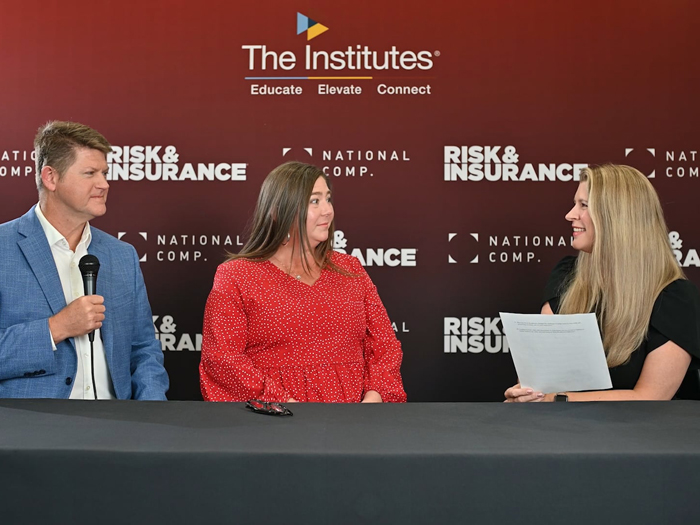The 8 Traits of a Highly Effective Risk Manager, According to United Educator’s Constance Neary
Today’s higher education institutions face many challenges, including economic uncertainty, ongoing pandemic adaptations, questions about the return on investment for degrees, dropping enrollment, and declining trust in public institutions.
Establishing a well-run enterprise risk management (ERM) program helps strengthen the safety of your campus community and helps lower institutions’ risk exposure.
This requires an effective risk manager, or someone designated to serve that role.
The pandemic has led to a ‘great resignation’ ─ people are leaving jobs in increasingly high numbers, and we are seeing shifts and newcomers to these roles on campuses nationwide.
As vice president for risk management at United Educators, a risk retention group of more than 1,600 members representing K-12 schools, colleges, and universities nationwide, I have seen a lot of variation, but some consistency in what it takes to succeed as a risk manager in today’s environment.
The Eight Traits Effective Risk Managers Need
Here are the top eight attributes of an effective risk manager:
1. Leadership influence: Gone are the days when the risk manager worked out of a shed near the transportation depot in some far corner of the campus. Today’s risk manager has a rising organizational profile. The most successful ones have access to senior leadership and use a variety of tactics including data analytics and benchmarking to align with institutional priorities, and even storytelling to get buy in and commitment to ERM.
2. Inclusive leader: Developing and communicating shared values are among the core competencies of skilled risk managers. Engaging senior leaders, front-line workers, and students to drive adoption of best practices is a key to weaving risk management into the fabric of campus life. Part of this requires having ears and eyes on the ground, it cannot all be done remotely. When I visit a campus, it is a promising indicator of an effective risk manager when they are greeted by name by colleagues on the grounds and in the academic buildings.
3. Problem solver: Helping partners across campus do activities in a relatively safe manner requires an empathetic communicator who enters discussions with a problem-solving mindset. Tone matters for reaching improved outcomes. Framing issues in a way that people care about, such as the shared goals of keeping students safe, will help drive adoption of risk management practices more readily than framing risk management as only about avoiding a lawsuit.
4. Perceptive team builder: Stakeholder relationships are critical to success. The ability to build teams of “risk owners” who help identify and mitigate risks at a functional level is essential to running a holistic ERM program. This means fostering other risk management champions, discerning organizational roadblocks, and understanding the physical and organizational landscape to navigate those successfully.
5. Partners with insurance experts: Influential risk managers capitalize on the knowledge and expertise of trusted brokers and insurers. They should take full advantage of the resources these outside partners can provide including expertise on risk trends along with practical tools like checklists, tip sheets, and training. Even those risk professionals who are new to issues of educators’ legal liability can draw upon these partnerships to provide tailored responses to increasingly complex challenges.
6. Risk management technical savvy: Risk managers must understand insurance markets and coverage options to build a tower of coverage to meet their needs. Understanding everything from the structure and benefits of a risk retention group to the role of risk transfer in contract management are building blocks of an effective ERM program. Other tools could include programs like a risk management credit program that help the institution reduce premiums by implementing best practices – along the lines that auto insurers offer discounts for safe drivers.
7. Incorporates diverse viewpoints: Diversity enriches our communities and strengthens business outcomes as reported in Forbes and elsewhere. Higher education leaders could benefit from the “great resignation” by attracting new talent to risk management where we see an influx of professionals from other fields that have data sciences and quantitative skillsets. While in the past many people “fell into” risk management, there is a growing demand for specialized loss prevention by industry. We have an opportunity to cast a wide net to strengthen our talent pool of skilled risk professionals.
8. Data-informed decision-maker: Understanding the greatest risks, including the dangers of social inflation driving exorbitant awards, and taking steps to mitigate those risks is crucial.
At UE, we provide claims studies paired with risk management best practices and checklists to help our members understand trends and reduce risk. Digesting and sharing those kinds of resources will help inform your risk management priorities and persuade allies to support their adoption.
Colleagues at The Institutes, Risk and Insurance Knowledge Group, tell me that they are seeing double digit growth in demand for risk management professionals.
They described the biggest needs are for risk managers who have industry-specific expertise (education, healthcare, manufacturing or other sectors), to focus on loss prevention and grow their organizational risk management culture.
Given the increasing complexity of risks challenging education, campuses are well-served by risk management professionals who bring expanded skill sets to the work of providing a safe learning environment. &










